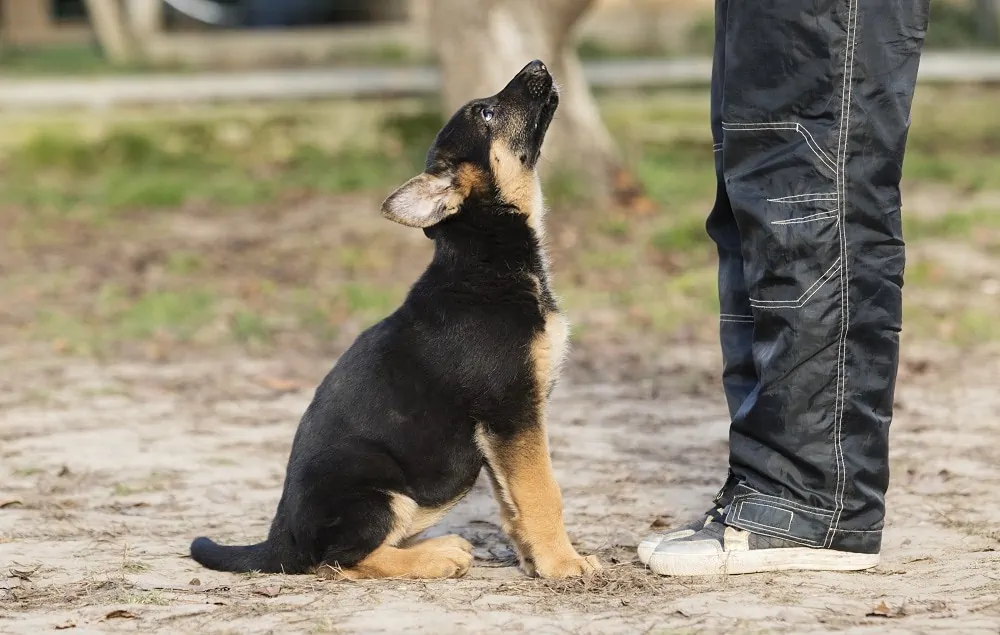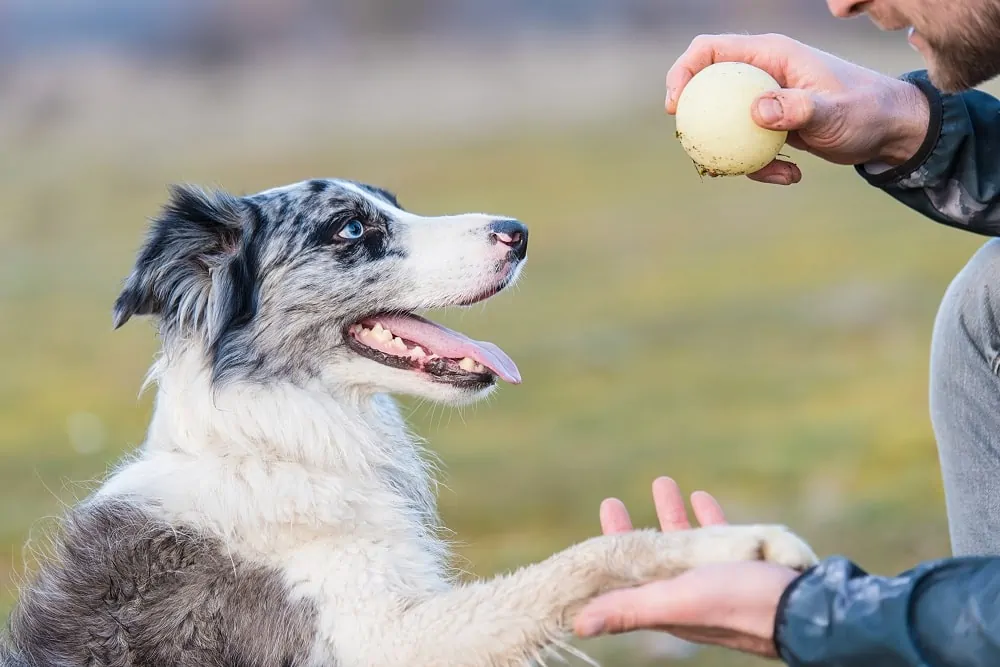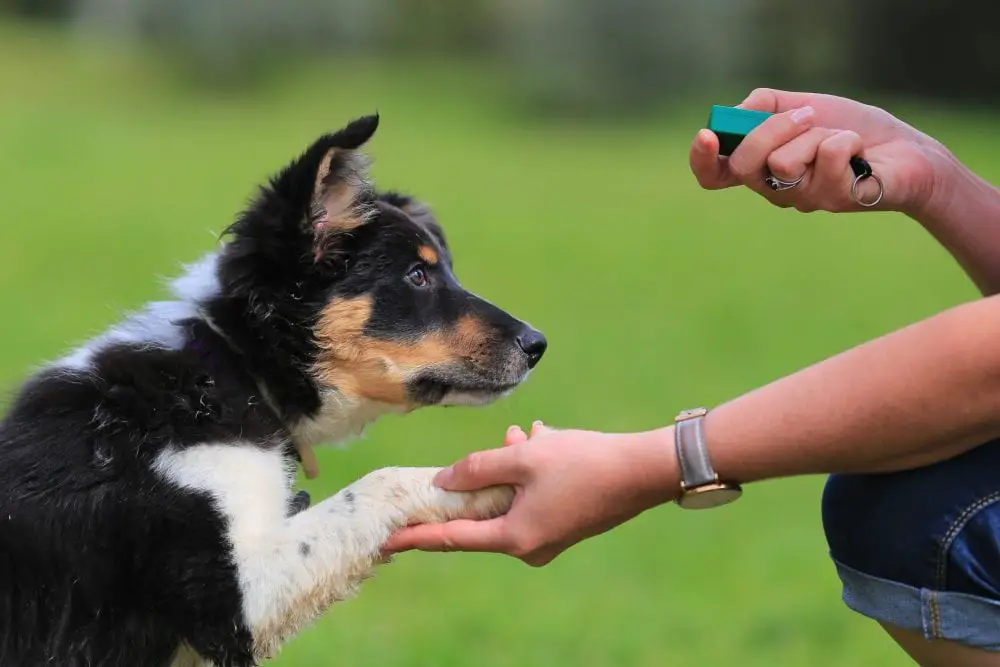“Stop…sit…stay…good dog.” A common set of phrases to hear around dogs, but one doesn’t often think about dogs in different countries. Are non-English dogs trained differently from their English compatriots?
The question is a good one, so let’s explore dog training in a different language.
How do I teach my dog in Dutch? You can teach your dog Dutch by repeating the same commands to reinforce the same ideas, just as you would in any other language. Puppies are usually easier to train but older dogs can be retaught in a new language like Dutch with hard work, patience, and commitment.
Training dogs is an interesting and rewarding process, but not something to be taken lightly. A well-trained dog is a joy while a badly trained dog can be a menace to themselves, other dogs and society in general. Therefore, it is important to train dogs well.
Dutch Dog Commands
Below are a few basic commands that can be used to train dogs in Dutch. These commands are not exhaustive of course, but they are a good starting point with your dog.
| English | Dutch | Pronunciation |
| Sit | Zit | (szit) |
| Down | Af | (auf) |
| Stand | Staan | (sta: n) |
| Stay | Blijf | (blife) |
| Heel | Volg Rechts | (volg /reck-sh) |
| Come | Hier | (he-er) |
| Speak | Blaffen | (blah-fun) |
| Jump | Over | (oh-ver) |
| Fetch | Apport | (ah-port) |
| Go Out | Vooruit | (voh-rit) |
| Guard Alert | Bewaken | (bay-walkin) |
| Search | Reveiren | (ray-vee-rin) |
| Track | Zoek | (zook) |
| Out/Let Go | Loslaten | (los-law-ten) |
| No | Foei | (foo-i) |
The Training Process

Just like children, dogs need a safe space to grow and learn in. The only way this can be achieved is through boundaries and positive reinforcement. This is what you should think of when training your dog or puppy.
Getting Started
So you have just gotten a new dog. Whether it’s a puppy or an older dog, all dogs have the ability to be trained, using the right methods. When working with a dog, remember that all dogs want to love and want to be loved, so remember that as you start their training.
Four ‘P’s of training
Praise
The first P is Praise. Just as a child is encouraged by being acknowledged and praised, so is your dog. This does not mean that you should bribe your dog into good behavior, but good behavior should be acknowledged as much as possible.
Whether it’s with a treat, a hug or a “good boy” (or “Braaf”), showing your dog love when they do something right will encourage them to behave better and be more obedient.
Practice
The second P is Practice. No animal will learn new commands the first time. Commands should be practiced often whenever the opportunity presents itself. Especially at the start, commands should also be consistent and the same words should be used.
It is important to practice commands in many different environments, to teach your pet that there are certain expectations of behavior in different places.
Prevention
The third P is Prevention. Just as you would watch a child make sure they don’t make a mistake and get hurt, the same applies to your dog.
While dogs are very smart animals, they are still controlled by their instincts so it is important to watch for problematic situations and places.
If you are teaching your dog to heel (or “volg rechts”), you need to make sure that there are no possible distractions around. That means if there is a possible reaction that will undo your training, distract your dog.
Patience
The fourth P is Patience. Just as you would never yell at your child for making a mistake or a mess, never punish your dog either.
While yelling or hitting might seem like an easy solution to bad behavior, it is far from the right answer. You will just scare your dog, making it more likely that he or she will misbehave.
Always be patient with an animal. Do not expect too much of your pet too soon and if you’ll pardon the pun, start the training process with bite-size pieces of information that won’t overwhelm your little friend (source).
The Five Basic Commands
While there is no one-size-fits-all approach to dog training, there are a few methods that can be used to train a dog. The most important thing before you even begin training is to have a good relationship with your pet. If he/she trusts you, then training should be a lot easier.
There are several items you may need to train your pet. Favorite treats, a toy, a clicker (a small item that makes a clicking sound – this will be used to show your pet that he/she has done something right) and lots of love and enthusiasm.
Sit
Sitting is one of the most basic commands and can be achieved through three methods:
Capturing. This method relies on waiting for your dog to sit naturally. As they do so, you say “yes” or “Ja” and give them a small treat and stand up.
When the dog sits again, you repeat the process. As the dog starts to learn what the motion of sitting in, you can start to say “sit”/“zit” and reward them for following the command.
Luring. This method relies on creating the movement of sitting. You start by tempting your dog with a food treat. As the dog comes closer to accept the food, you raise the treat slightly, forcing your dog’s head to follow the treat up, lowering its backside to the ground.
This method should be repeated with the treat and then without, as the dog learns the motion of placing itself on the ground. As the dog gets used to the motion, you can start using the word “zit” to emphasize the command (source).
Proofing. This is not a method on its own, but actually a way to emphasize taught behavior. This method involves another person using the Capturing or Luring method on your dog. The idea is to emphasize obedient behavior for the dog and create new scenarios in which the dog should obey (source).
It is important to note that the dog should not be placed in the sitting position by the owner or trainer, but should be encouraged to place itself in that position. This can confuse a dog.
Stay
The idea behind the action of “stay” or “blijf” is that the dog remains in their current position until their owner releases them. This can be done by following these steps:
Start by choosing a release word. This word can be anything of your choosing, like “okay”/”oke”, “free”/”frij” or “all done”/”klaar”.
The main point is to choose one word or phrase and remain consistent. Once your dog is in a position you want them to be in, you use the word “stay” and walk away from them.
Dog treats work well in this activity as you throw the treat to your pet and say the release word as they come forward to get the treat.
Repeat this and only throw the treat once your dog starts to move. This conditions your dog to relate movement to the treat. Do not hold the treat in your hand as it brings the dog to you.
Then you should start to train your dog to sit for longer periods by taking longer breaks before saying the release method. Counting or reading the alphabet in your head is a good way of timing yourself.
If your dog starts moving too early, don’t worry about it. Just be patient and start the training again with a shorter time (source).
Come
When it comes to “coming” or “hier”, it is important that your dog does not associate this with punishment or a negative outcome. So please do not use that command to call your dog to you when you aren’t happy with them. Also, avoid using their name when you are angry.
With that out of the way, “hier” can be taught in two ways. The first method is to say the word and then stay in the same spot and have your dog come to you.
When they come, praise and reward them. This can be repeated with a helper as well who should hold your dog’s leash and only release it once the “hier” command is given.
The other method is to lie flat on the ground and call your dog’s name in a happy tone. Once your dog comes to you, praise and reward your pup, associating coming to you with good things.
Under no circumstances should you say “come” to your pet and chase after it. Your dog will think it’s a game and just run away (source).
Lie down
The action of teaching your dog to “lie down” or “af” is quite similar to teaching them to sit. The idea is to encourage the movement of the dog laying flat, lowering treats to the ground until they are in the position you want them.
Once the dog is used to going low for their treats, encourage them to continue by only providing the treat once their elbows touch the ground.
Never force them into that position but encourage them with love, praise, and a few treats. Bring in the use of the phrase as the dog gets used to lowering itself.
Fetch
This is the more active command that dogs have to learn. The first thing to note is that not all dogs enjoy fetching things. Some dogs just like to run while others will chase items but not bring them back. So the first thing is to find a favorite toy of your dog’s.
If your pet doesn’t have a favorite toy yet, start by showing them a potential toy by placing it on the ground. Every time your dog acknowledges the toy, give them a little treat. The process should be continued by stopping treats once your dog learns to touch the toy and only giving it a treat once he tries to mouth it.
The process of fetching should then become more concrete once your dog picks up the toy. You should place your hand out, palm upwards to allow your dog to place the toy in it. Once he does so, he rewards him with more treats and slowly starts to increase the distance of the fetch duty.
At this point, you can start using the words “fetch” or “apport” to indicate the motion. The key to making your dog enjoy the game is to make sure that you make it look as exciting and fun as possible, especially if you have a reluctant pet (source).
Positive Reinforcement
Generally, positive reinforcement is the best way to train your dog, especially younger ones. While there may be some role for negative reinforcement, that type is never punitive or cruel, but only slightly discouraging.
With dog training, you are trying to get your dog to behave in a certain manner. These behaviors can only be taught slowly over time, in short, and fun training sessions.
Dogs should never feel overwhelmed by the amount of training as this is negative for them and their relationship with you.
Rewards can come in several forms. The easiest is to praise your dog in a happy and positive tone with a cheerful “good dog” or “goed hond”.
Dogs also love affections, so lots of scratches and belly rubs will get them to behave better as well.
Finally, the best positive reinforcement for any dog treats. These can be small biscuits or snacks, anything that your pet enjoys and you know that they will serve as a motivation for them during training (source).
The best way to reward your dog is to remember what your dog likes. If your dog is not a huge fan of treats or would rather play a game with you, it’s best to use praise and love as a motivation.
Once you are done with your short training session for the day, you can play your pet’s favorite game and really show him/her how happy you are with their progress (source).
For a quick tip about training your dog, check this video below:
Training a Bilingual Dog

It is very possible to train a dog in different languages. As with normal training, the commands should be used consistently in short training sessions.
There are several advantages to having a dog trained in multiple languages. It allows for better control of your dog, especially in a negative situation where you may want your pet to only listen to you.
Interestingly enough, dogs can also be trained through non-verbal cues. Just as humans look at body language, dogs do the same and a trainer can train an obedient dog that responds only to hand signals.
Training from Another Language to Dutch
It is often said that dogs listen to how something is being said versus what exactly is being said. If a dog has already been trained in one language and you would like it to be trained in another, it requires patience, as with any training.
The process of training the dog would be the same as above, with the added layer of using the new word or phrase and creating new connections for the dog. The new phrase should be used with the old phrase to start creating the connection.
Practice makes perfect, so your dog will only be able to internalize the command fully if it is used consistently and often.
You’ve forgotten most of your high school Spanish so it would be unfair to ask your dog to remember new phrases and commands without constant practice and praise.
Common Issues During Training
There are several issues that dogs could have while training. Most of these are easily solvable as long as you know your pet and what they want.
My dog does not stay focused on training
Dogs do not have a long attention span. Training should be kept short (maximum five minutes) and only one command should be attempted per session.
My dog does not listen to me during training
You will need to find what makes your dog excited and amenable for training. Only by using the rewards he/she likes, will you get their attention.
The clicker isn’t working to help train my dog
There are several training tools that you can use to train your dog. You may have to use different ones to see which works best for your dog.
Your reward also may not be the right one to create a positive association with the clicker (source).
My dog’s training does not work when he/she is outside
This common issue is due to the dog not having a tolerance for distractions. Since the home is a controlled environment, it is understandable that your dog will behave best there. Outside the home, there are a lot more distractions.
In this case, an immunity to temptations needs to be built. It requires training the dog to ignore distractions in its environment by slowly exposing them to small distractions and building up to really enticing ones, rewarding your little friend every time he ignores the distraction (source).
Related Content: German Dog Commands, to train your dog using the German language.
Final Thoughts
Whether you live in the Netherlands or just want to train your dog in a new language, you should know that all dogs are trainable.
With lots of love, praise and treats, you can get your dog to heel faster than you can say “Wauw” (Wow).


0 Comments